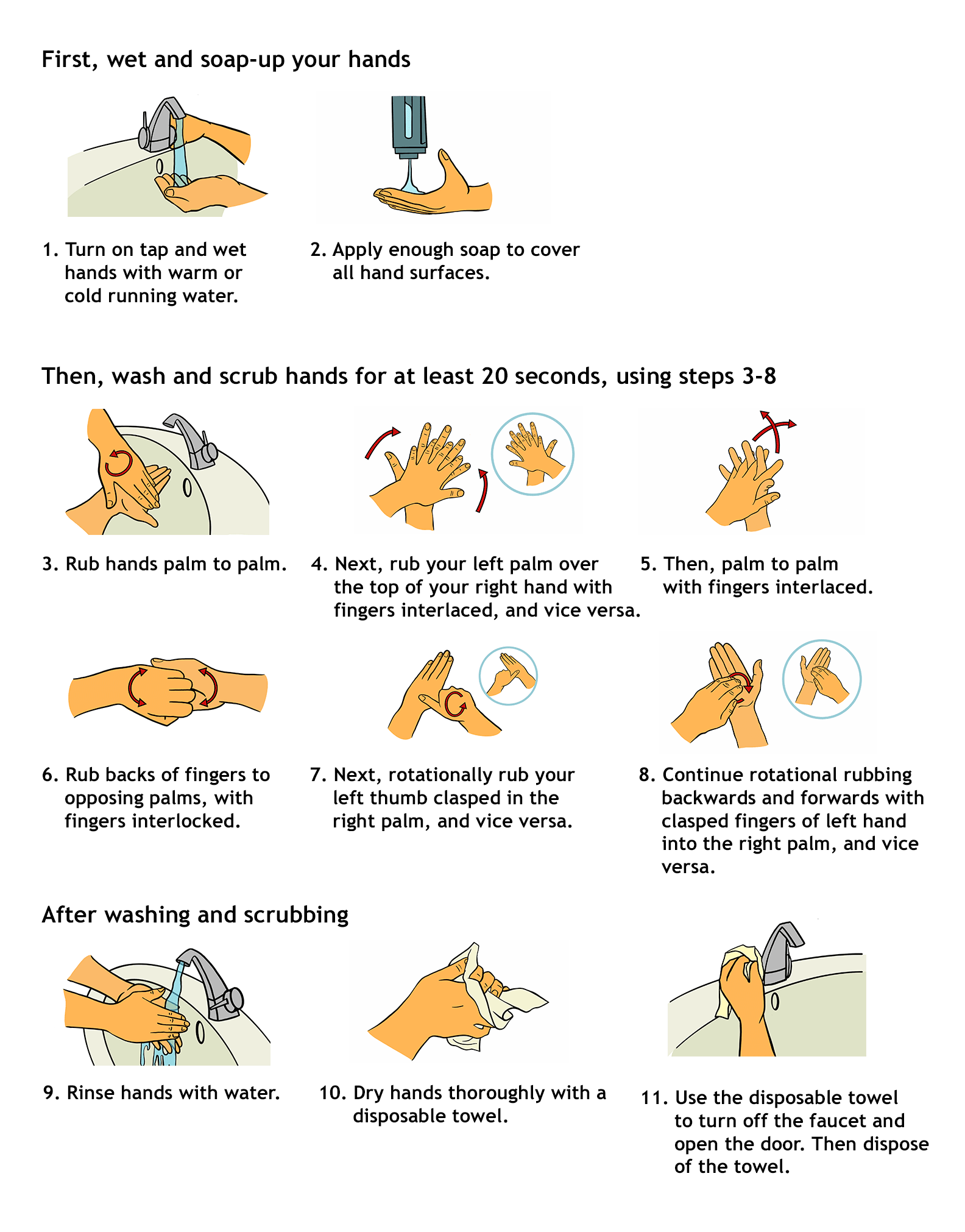Coronaviruses are a family of viruses that commonly occur in humans and animals. Most coronaviruses cause mild to moderate upper-respiratory tract illnesses similar to the common cold and flu, and sometimes lower-respiratory tract illnesses, such as pneumonia or bronchitis. Most people will experience a type of common human coronavirus in their lifetime. Coronavirus Disease 2019 (COVID-19) is a novel coronavirus caused by the human body's reaction to the strain of the virus known as SARS-CoV-2. In these topics, you'll learn what COVID-19 is, who is at the highest risk of contracting it, how it's transmitted, signs and symptoms, and precautions you should take to prevent and treat it.
Coronaviruses and COVID-19
- identify those at a higher risk than the general population for contracting COVID-19
- identify precautions to take to protect yourself and others
- identify best practices to use when washing your hands to protect yourself and others from exposure to infectious germs
Job Aid
COVID-19: Protective Measures
Use this job aid as a reminder of the protective measures you can take to protect yourself and others from exposure to the COVID-19 virus.
Protective Measures
- Frequently wash hands with soap and water.
- Once you've soaped up, scrub hands for at least 20 seconds before rinsing and drying your hands.
- If soap and water aren't available for handwashing, use alcohol-based hand sanitizer of 60% ethanol or higher.
- Avoid touching your eyes, nose, and mouth with unwashed hands
- Avoid close contact with people who are sick.
- Don't share personal items such as dishes, cups, utensils or towels with coworkers.
- Cover your cough or sneeze with a tissue
- Throw the tissue in the trash after use.
- If you don't have a tissue, sneeze or cough into the inside of your elbow.
- Clean and disinfect frequently touched objects and surfaces using an EPA approved product for SARS-CoV-2.
- If you are sick, stay home. Voluntary home isolation can help prevent transmission to others.
- Contact your healthcare provider immediately if you think you may have been exposed to COVID-19.
Use of Face Coverings and Facemasks:
If you must go out, the CDC recommends wearing cloth face coverings in public settings where other social distancing measures are difficult to maintain, such as in grocery stores. This approach is especially important in areas with significant community-based transmission.
If you are sick, coughing or sneezing, wearing a facemask will help prevent the spread of the virus to others.
Course: Safety Short: Coronaviruses and COVID-19
Topic: Coronaviruses and COVID-19
Topic: Coronaviruses and COVID-19
Job Aid
Helpful Links to Information about COVID-19
Use this job aid to access useful information online, related to the most updated information about COVID-19.
To access a link, copy it from the table and paste it into the URL line of your browser window.
| Website | Link | Information Provided |
|---|---|---|
| Centers for Disease Control and Prevention (CDC) - Coronavirus Disease 2019 | https://www.cdc.gov/coronavirus/2019-ncov/about/index.html |
|
| World Health Organization – Novel Coronavirus 2019 | https://www.who.int/emergencies/diseases/novel-coronavirus-2019/events-as-they-happen | Frequently updated worldwide information about the current coronavirus outbreak (COVID-19) |
| CDC: Coronavirus Disease 2019 Information for Travel | https://www.cdc.gov/coronavirus/2019-ncov/travelers/index.html | Information about travel cautions and restrictions throughout the world and within the U.S. |
| EPA: Disinfectants for Use Against SARS-CoV-2 | https://www.epa.gov/pesticide-registration/list-n-disinfectants-use-against-sars-cov-2 | Provides a list of products that meet the EPAs criteria for use against SARS-CoV-2, the virus that causes COVID-19 |
Course: Safety Short: Coronaviruses and COVID-19
Topic: Coronaviruses and COVID-19

Topic: Coronaviruses and COVID-19
Job Aid
Washing Your Hands Properly
Purpose: Use this job aid as a reference guide for how to wash your hands properly to prevent spreading viruses, bacteria, and any other germs that can easily be spread by touching.
The best protection against infection is to avoid being exposed to viruses and bacteria through proactive and defensive measures. As with other respiratory viruses, the CDC recommends frequent handwashing with soap and water.
The recommended method is described and illustrated below.

Steps for washing and scrubbing hands
Because damp hands can promote the spread of the virus, dry them using a clean disposable towel, if available, and rub vigorously until they are dry. If a disposable towel is not available, air dry your hands using a powered hand dryer.
Washing hands with soap and water is the best way to get rid of germs in most situations. However, if soap and water are not readily available, you can use an alcohol-based hand sanitizer that contains at least 60% ethanol. You can tell if the sanitizer contains at least 60% ethanol by looking at the product label.
© 2020 Skillsoft Ireland Limited
Komentar
Posting Komentar